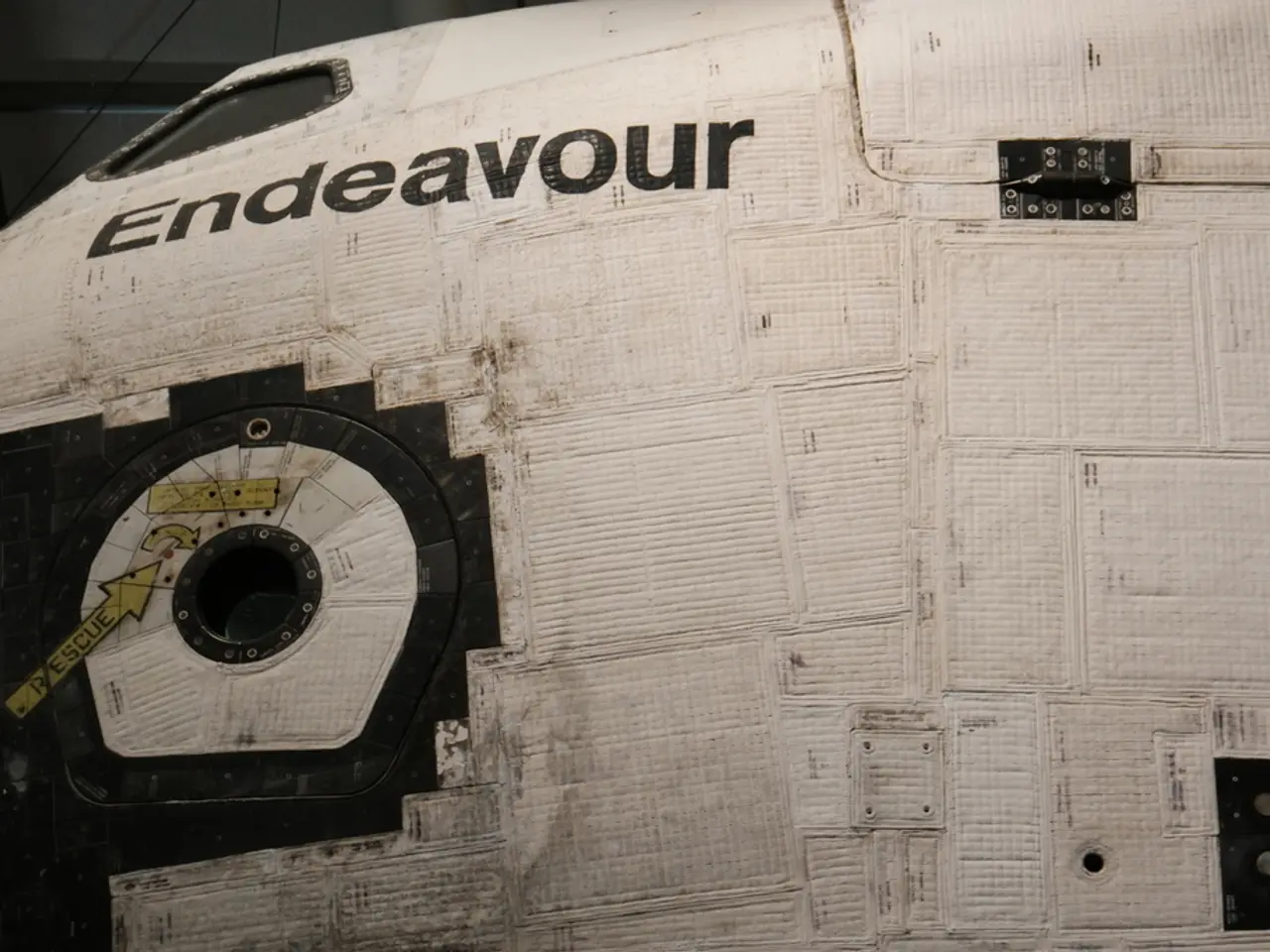Space Near-Collision with Debris: ISS Team Forced into Late-Night Emergency Evacuation Exercise, Stuns Global Community
In a recent unexpected event, the International Space Station (ISS) crew was put on high alert as a precautionary measure, with the crew remaining in their emergency spacecraft for approximately 60 minutes, ready to detach from the ISS and return to Earth if necessary. This incident occurred in the vicinity of the ISS, and the reason for the precaution was the sudden disintegration of an old Russian satellite, which broke up into hundreds of pieces.
The debris is believed to have come from a non-operational Russian spacecraft, Resurs P1 (SATNO 39186). These objects travel at speeds up to 17,500 mph, making them uncontrolled and unpredictable. They were circulating in low Earth orbit at an altitude dangerously close to the ISS.
This incident underscores the constant vigilance required in space operations, as even a small piece of debris traveling at orbital velocities can cause catastrophic damage. As we continue to push the boundaries of space exploration, ensuring the safety of astronauts and the sustainability of our orbital environment must remain top priorities.
Current efforts for space debris mitigation and removal focus on reducing debris generation, enforcing stricter end-of-life disposal rules, and developing active removal missions. Space agencies and commercial operators are now required to ensure that about 90% of rockets launched into low Earth orbit (LEO) will re-enter the atmosphere within 25 years after mission end. ESA has introduced even stricter guidelines requiring re-entry within 5 years, improving compliance significantly since 2023.
One of the key ongoing efforts is the European Space Agency's (ESA) ClearSpace-1 mission, scheduled to launch in 2025. This mission will actively capture and deorbit a defunct satellite adapter, demonstrating technology needed to remove larger debris mass from orbit and prevent cascade collisions. This mission represents the world's first commercial debris removal service contract and aims for regular debris removals starting in 2030.
ESA’s CleanSpace initiative is also developing onboard technologies to avoid explosions in orbit, enable controlled re-entry, and improve satellite passivation. Long-term plans emphasize the need for missions that can rendezvous with, capture, and safely deorbit derelict objects.
International guidelines are advancing debris mitigation standards that apply to governmental and commercial launches alike, aiming to stabilize the debris environment and prevent runaway collision cascades. Private companies and startups worldwide are contributing new technologies, from AI-based debris tracking to tethered-net capture systems.
The global market for debris monitoring and removal is growing rapidly, driven by increasing satellite launches and space exploration programs. North America and ESA-backed efforts represent major financial and technical investments.
Dr. Eleanor Richards, an expert in space policy at the University of Cambridge, emphasized the need for a global approach to space traffic management. She highlighted the importance of improved debris tracking and prediction systems, enhanced international cooperation, development of new technologies for debris mitigation and removal, and continued focus on astronaut safety and emergency preparedness.
It's worth noting that space agencies regularly track about 23,000 pieces larger than a softball. However, there are currently over 500,000 pieces of debris orbiting Earth, most of which are too small to be tracked.
The resilience and adaptability of human explorers continue to shine in the face of challenges like this debris event. Commander Sarah Johnson, a veteran of three space missions, highlighted the importance of training and teamwork in emergency situations.
This unexpected event has reignited discussions about the growing threat of space debris and the safety of space pioneers. It serves as a stark reminder that as we venture further into space, we must also invest in the safety and sustainability of our orbital environment.
Read also:
- Spheron and Nubila Team Up to Use Web3 Technology for AI that Combats Climate Change
- Renewable marine fuel with a reduced carbon footprint will be supplied by Seaspan, a newly-established collaborator in the climate movement.
- Anticipated Arrival of Additional 150 Electric Buses by BVG Next Year
- ChatGPT Transforms into an Intergalactic Tour Guide in the Sequel: Part 2








